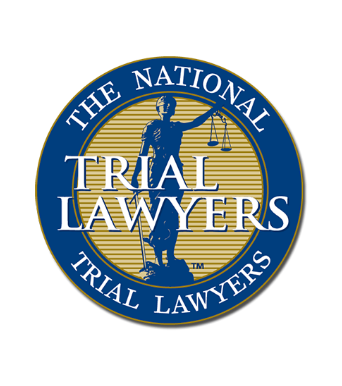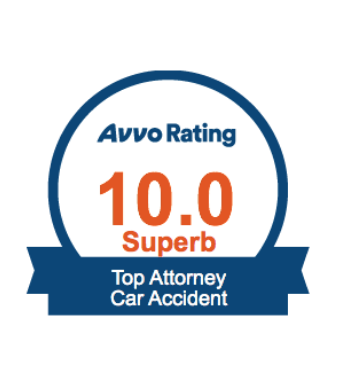Talbot County, MD Personal Injury Lawyer
Accidents and mishaps are a part of everyday life. If someone else’s negligence created a situation that caused you to suffer an injury, you have grounds for filing a personal injury claim against them.
An injury can affect every aspect of your life, from your physical health, to your ability to work, and to your relationships with your loved ones. You deserve compensation for your injury so you are not financially burdened. Rice, Murtha & Psoras handle all types of personal injury cases, including car accidents, slip and falls, and medical malpractice.
If you have been injured because of someone else’s actions, get in touch with the Talbot County personal injury lawyers as soon as possible. Call (410) 694-7291 today to schedule a free and confidential consultation to discuss the possibilities in your case.
Damages in a Personal Injury Lawsuit in Talbot County, Maryland
Maryland is a contributory negligence state. This means that the court assesses the degree of fault of each party in a Talbot County personal injury case and assigns a percentage of fault. If the court determines that the plaintiff’s percentage of fault is one percent or more, they will not be able to recover economic damages for their injuries.
Maryland is one of only a few states that use the contributory negligence doctrine. Most other states use the comparative negligence system. In this system, the court assigns the percentage of fault to each party. the plaintiff’s compensation is then reduced by their percentage of fault.
The amount that you can receive in compensation in a personal injury case depends on what happened during the incident or situation that caused your injury. the injury that you suffered doesn’t matter—we can fight for you if you suffered from a traumatic brain injury, spinal cord injury, broken and fractured bones, organ damage, among other injuries. However, there are certain types of compensation that are common across most cases. the following are types of compensation that plaintiffs in most Talbot County personal injury cases can expect to recover.
Lost Wages and Diminished Earning Potential
Serious injuries can leave a victim unable to work, which means that they won’t be able to make the same income that they made before their injury. Fortunately, it’s possible to recover lost wages in a personal injury lawsuit. Plaintiffs can get compensation for wages that they have already lost; they can also get compensated for the loss of their ability to make an income through work in the future.
Medical Costs
Nearly all personal injury cases involve physical injuries, although some are based on emotional injuries. You can get compensation for the medical treatment that you required and will require in the future, including physical therapy, medical equipment, prescription medications, hospital visits, ambulance rides, surgeries, and more.
Non-Economic Damages
Most of the damages in a personal injury lawsuit have a clear monetary value. Some damages, however, don’t but plaintiffs can still receive compensation for them. Plaintiffs can get compensation for pain and suffering, loss of enjoyment of life, potentially shortened lifespan, and physical disfigurement or impairment. It’s possible for a plaintiff’s spouse to be added to a lawsuit if the plaintiff’s injury has resulted in a loss for the spouse; this is known as loss of consortium.
Punitive Damages
If a defendant exhibits “actual malice” in the actions that led to the plaintiff’s injuries, they may be ordered to pay punitive damages by the court. This type of compensation is rare and difficult to prove but important in that it dissuades other entities from acting similarly.
Wrongful Death Benefits
The families of people that die because of someone else’s negligent behavior are able to file wrongful death lawsuits. These suits can result in compensation for the cost of the funeral of the deceased person and part of the deceased person’s projected future earnings.
What Types of Personal Injury Lawsuits are there in Talbot County, Maryland?
Our Talbot County personal injury attorneys are prepared to handle nearly any type of personal injury lawsuit. the following are the most common cases that we help clients with.
Auto Accidents
Our team of legal experts can help clients file lawsuits following car accidents of all types including hit and runs, head-on collisions, rear-ends, sideswipes, and drunk driving incidents. We can handle accidents involving cars, trucks, vans, busses, motorcycles, and even bicycles and boats.
Slip and Falls
Slip and fall accidents usually happen because a property has not been maintained properly. Whether your slip and fall happened in a casino, bar, restaurant, grocery store, hotel, or other establishment, we can work to establish a case for the property owner’s negligence.
Product Liability
If you were injured by a product, you may be able to hold the manufacturer responsible. Products that cause injuries are usually household appliances, medical devices and medications, automobiles and auto parts, and items for babies.
Workers’ Compensation
Get in touch with a Talbot County personal injury attorney if your workers’ compensation claim was denied by the workers’ compensation insurance company. We can help you file an appeal. We can also help you file a personal injury lawsuit against your employer if you suffered an injury at work but they didn’t have a workers’ compensation policy for you.
What Does Contributory Negligence Mean in Talbot County, Maryland?
“Contributory negligence” is a somewhat complex legal rule that only a few states use. In an accident lawsuit, the court will need to determine how the injuries happened and who was at fault for the accident. If the court finds that the defendant was at fault, then the defendant has to pay damages. However, the court could also find that the victim was actually responsible – in part or in full.
In many cases, the issues are not so clear-cut; there may be other defendants who share partial blame, or the issue of whether the defendant or the victim is at fault might have some grey areas. Most states in the U.S. deal with this by using a “comparative fault” system. Under those rules, each party involved in the case is assigned partial blame for the accident using a percentage. If the court finds that the victim was partially at fault, then their damages are reduced by that percentage.
Maryland (along with a handful of other states and Washington, D.C.) uses a “contributory negligence” rule instead. Under this system, a victim who is even slightly responsible for their own injuries cannot recover damages in a lawsuit. This rule essentially means that victims who might have slipped up or made minor mistakes cannot sue someone else for their injuries.
However, there are some complex legal issues that your Talbot County personal injury attorney can help you with that might prevent you from losing your case outright.
How is Percentage of Fault Calculated in Talbot County, Maryland Personal Injury Cases?
In a comparative negligence system like those used in other states, the court needs to assign a percentage of the blame to each party involved. In injury cases where the victim is partially at fault, the percentage assigned to the victim will reduce their damages by the same amount. In Maryland, we use a contributory negligence system that means even 1% fault is enough to block a victim from recovery. Fault can also be assigned as a percentage to each defendant.
Calculating Fault Percentage for Victims
As mentioned, if a victim shares any fraction of the blame in an injury case, they will be unable to recover damages. Because this rule is so strict, fault determinations in Maryland are important.
For a victim’s actions to be considered contributing factors in the accident, the court needs to find that they actually affected the outcome. Something that does not actually cause the accident should not be considered a contributing factor. To determine whether something is contributory, courts look at whether the accident would have occurred anyway if the victim did not do that thing.
For example, a court might not assign any percentage of blame to a car accident victim who looked away from the road for a second to change the radio. If the other driver was driving drunk and speeding straight at the victim, an extra second of watching the road would not have stopped the accident.
If fault was more clearly shared, the court might assign a percentage of blame to the victim and block them from getting damages.
Calculating Fault Percentages for Multiple Defendants
When the court decides which defendant is responsible, they often assign partial fault to each defendant involved. This is common in car accident cases involving multiple cars or in medical malpractice cases where the individual doctor and the hospital itself each share blame in causing the injuries.
Before courts can assign a partial percentage of fault, they need to run the same test discussed above: they need to see whether the accident could have happened without each party’s acts or omissions. If only one party is really responsible, they will be 100% at fault. If both parties’ actions were necessary to cause the accident, then the court can assign a percentage of fault to each.
In many cases, courts weigh the relative danger of each defendant’s choices and decide which one was worse, then assign a percentage that way. For example, a court could say that a drunk, speeding driver was twice as liable as a driver who was only speeding. Fault could be split 33% for one driver and 67% for the other.
If courts cannot determine a percentage, they might deem the defendants “jointly and severally liable.” There, the court says both parties are wholly responsible, then leaves it up to the defendants to determine the split. In these cases, either party can be ordered to pay full damages, then they can sue the other defendant for contribution. Your Talbot County personal injury attorney can help you determine what percentage of fault is fair for each defendant.
How Can I Receive Compensation for My Personal Injury Lawsuit in Talbot County, Maryland?
There are typically two ways to get compensation after an injury case: through an insurance claim or through an injury lawsuit. When you pursue a personal injury lawsuit, your damages will be paid through either a settlement or an award at the end of trial.
When you settle your injury case, you give up the right to pursue additional lawsuits or damages. Typically, both sides negotiate a settlement, with the victim trying to get the defendant to pay out enough to cover their needs in full. By settling, you can get any and all damages paid, but the value of the settlement might be reduced to account for the fact that you save money by not having to put on a trial.
When you go to trial, the actual trial itself can be expensive. In the end, even if you get the same amount of money you could have at settlement, the cost of additional attorney’s fees might lower your overall winnings. However, it is possible that a jury might award higher damages than the defendant was willing to settle for. If the defendant refuses to settle for a fair amount, you may be able to get those damages from the jury award at trial. Trials could also include additional punitive damages to punish the defendant for bad actions.
Talk to a Talbot County personal injury attorney about how to get compensation in your injury case.
Contact a Personal Injury Attorney Serving Talbot County, Maryland
If you or someone close to you was injured when they were involved in a car accident, used a dangerous product, received bad medical treatment, or otherwise suffered an injury caused by someone else, speak with the personal injury attorneys from Rice, Murtha & Psoras as soon as possible. Call us today at (410) 694-7291.













